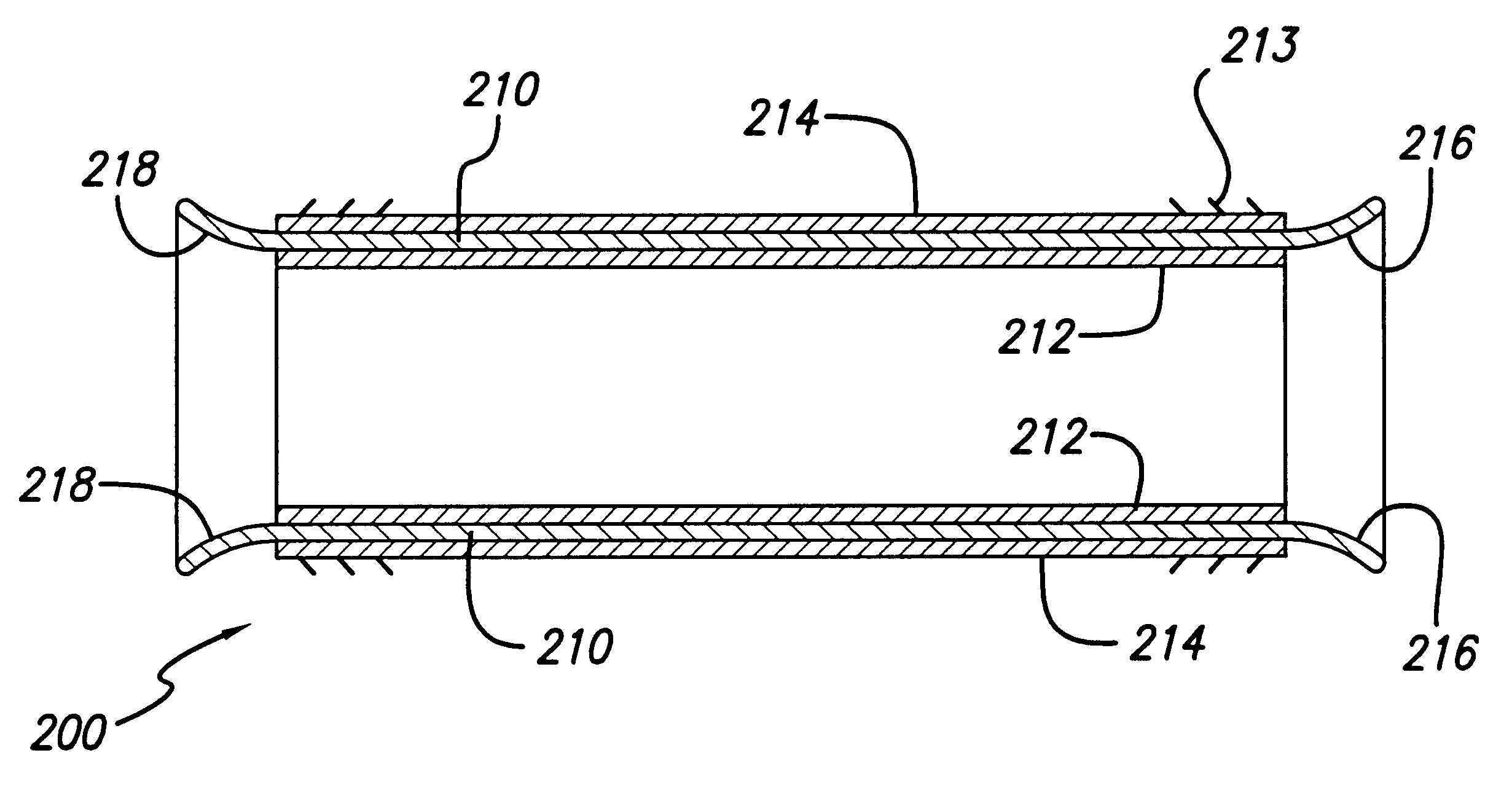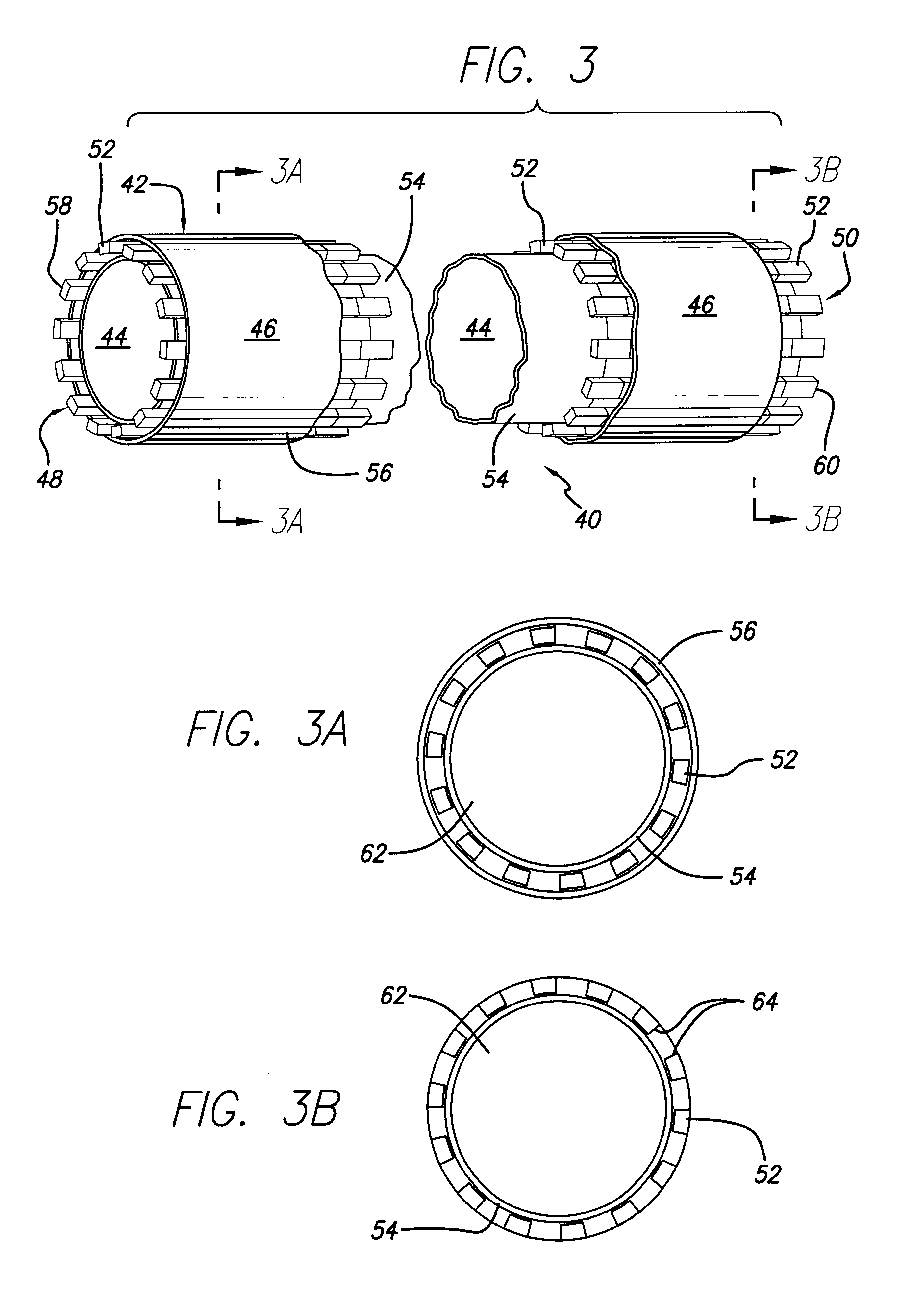Encapsulated stent
a stent and stent technology, applied in the field of encapsulated stents, can solve the problems of not showing a device, unable to disclose a reference, and unable to show other desirable features
- Summary
- Abstract
- Description
- Claims
- Application Information
AI Technical Summary
Benefits of technology
Problems solved by technology
Method used
Image
Examples
example 2
A 3 mm ID thin wall ePTFE graft was loaded onto a 3.56 mm mandrel. The top section of the 3 mm, ePTFE graft was wrapped with TEFLON tape to prevent migration. Next, three P-394 "PALMAZ" stents and three P-308 "PALMAZ" stents were pre-dilated on a 4.74 mm mandrel. The three P-394 pre-dilated stents were loaded first onto the 3 mm ePTFe graft, followed by the three P-308 pre-dilated stents, and then spaced equidistantly from another along the length of the 3 mm ePTFE graft. The predilated stents were then crimped onto the mandrel and a 4 mm ID ePTFE graft was loaded over the crimped stents. The 4 mm ePTFE graft was wire wrapped at both its ends and between the crimped stents. The entire assembly was then placed in an oven for 30 seconds and heated at 340.degree. C. and then removed. The assembly was then wrapped tightly with TEFLON tape with the three P-308 stents being wrapped first. The entire TEFLON tape wrapped assembly was then heated at a sintering temperature of 375.degree. C. ...
PUM
 Login to View More
Login to View More Abstract
Description
Claims
Application Information
 Login to View More
Login to View More - R&D
- Intellectual Property
- Life Sciences
- Materials
- Tech Scout
- Unparalleled Data Quality
- Higher Quality Content
- 60% Fewer Hallucinations
Browse by: Latest US Patents, China's latest patents, Technical Efficacy Thesaurus, Application Domain, Technology Topic, Popular Technical Reports.
© 2025 PatSnap. All rights reserved.Legal|Privacy policy|Modern Slavery Act Transparency Statement|Sitemap|About US| Contact US: help@patsnap.com



